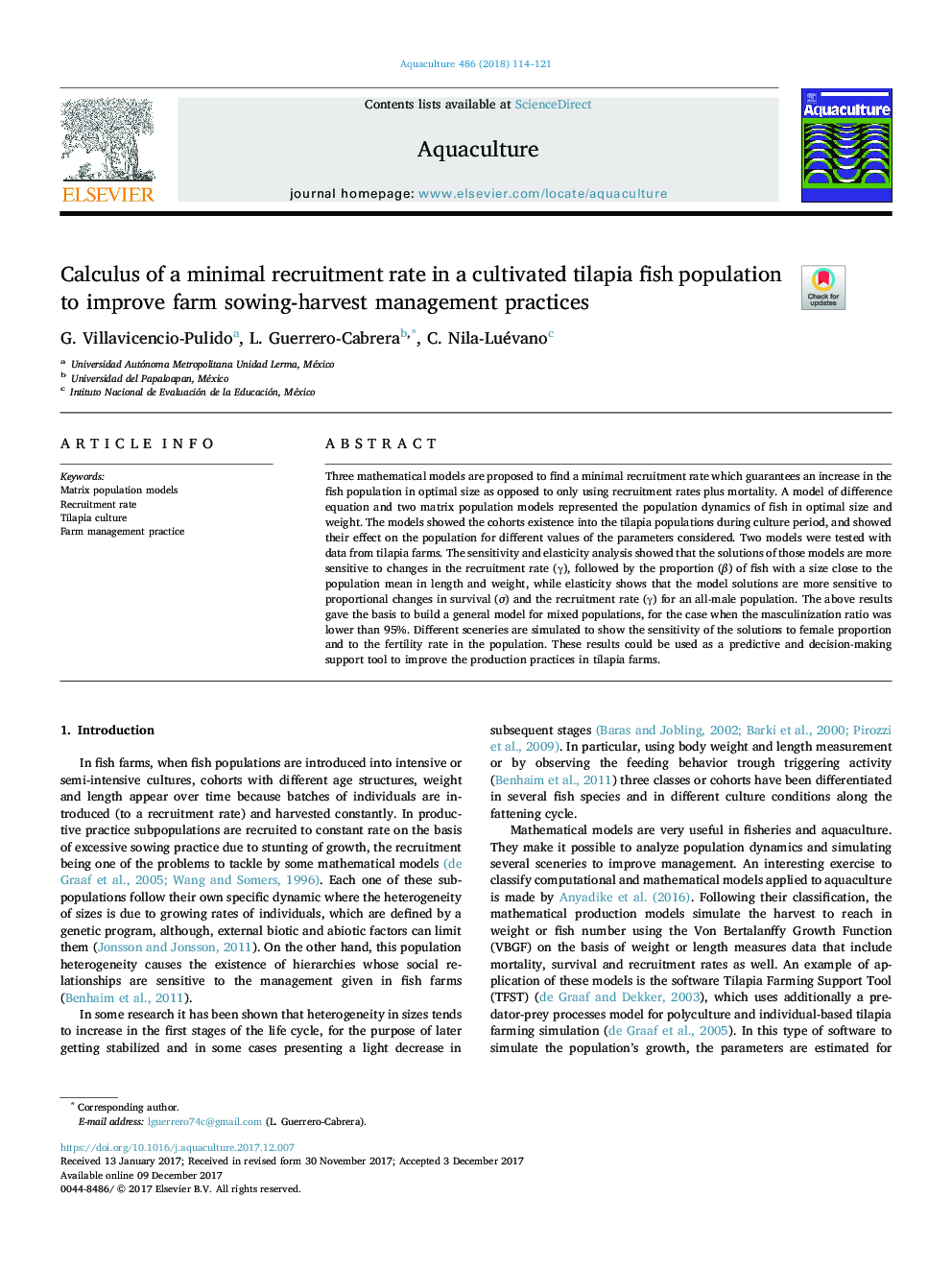| Article ID | Journal | Published Year | Pages | File Type |
|---|---|---|---|---|
| 8493469 | Aquaculture | 2018 | 8 Pages |
Abstract
Three mathematical models are proposed to find a minimal recruitment rate which guarantees an increase in the fish population in optimal size as opposed to only using recruitment rates plus mortality. A model of difference equation and two matrix population models represented the population dynamics of fish in optimal size and weight. The models showed the cohorts existence into the tilapia populations during culture period, and showed their effect on the population for different values of the parameters considered. Two models were tested with data from tilapia farms. The sensitivity and elasticity analysis showed that the solutions of those models are more sensitive to changes in the recruitment rate (γ), followed by the proportion (β) of fish with a size close to the population mean in length and weight, while elasticity shows that the model solutions are more sensitive to proportional changes in survival (Ï) and the recruitment rate (γ) for an all-male population. The above results gave the basis to build a general model for mixed populations, for the case when the masculinization ratio was lower than 95%. Different sceneries are simulated to show the sensitivity of the solutions to female proportion and to the fertility rate in the population. These results could be used as a predictive and decision-making support tool to improve the production practices in tilapia farms.
Related Topics
Life Sciences
Agricultural and Biological Sciences
Aquatic Science
Authors
G. Villavicencio-Pulido, L. Guerrero-Cabrera, C. Nila-Luévano,
